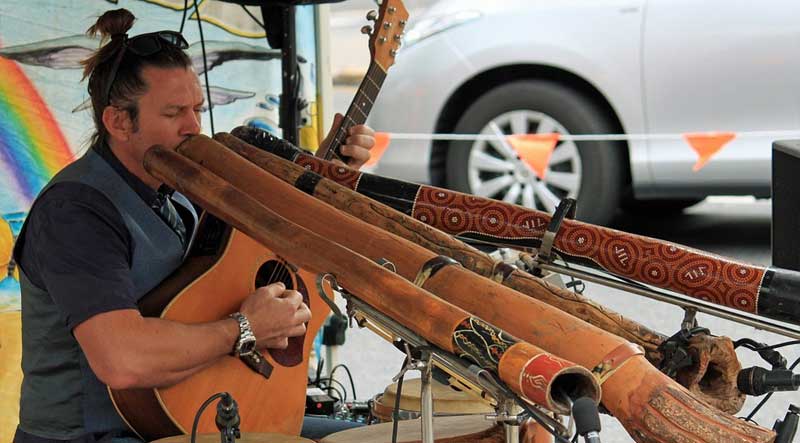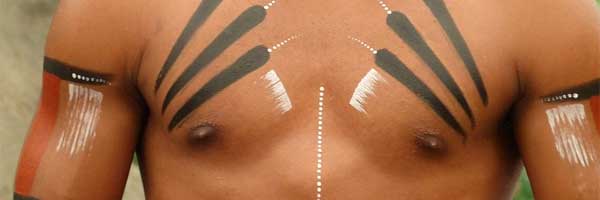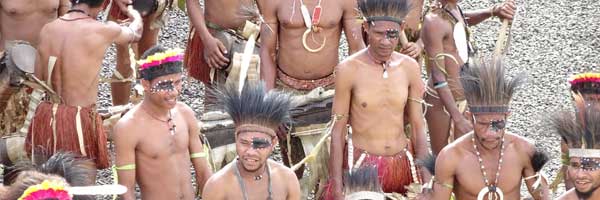
The Beauty of Aboriginal Music and Dance
Aboriginal art comes in so many forms. One of our favorite art forms is the music and dancing. In many instances, ceremonies with dancing and music are sacred. Outsiders will rarely be able to see this. However, there are places in the Northern Territory where visitors can see demonstrations.
Here are some of the characteristics of Aboriginal dance and music that you can expect.
Bodypainting

As with all their art, bodypainting tells a story. It is part of a ritual. Dancers often have different symbols and markings painted on them. Usually, the family must do the painting and only a relative is allowed to change it. The bodypaintings often relate to the person’s heritage, family, and life journey.
Clapping sticks

Clapping sticks are also called bilma. These are the oldest instruments used by the Aboriginal people. They are used to provide rhythm for their chants. When visiting local festivals, these clapping sticks will be seen all over. They are a constant anywhere where Aboriginal music is played.
Didgeridoos

The didgeridoo is another well-known sight in indigenous communities. This instrument was created about 1500 years ago and creates a sort of buzz sound. This sound is a familiar part of most Aboriginal music. Despite its important place in Aboriginal culture, indigenous people will sometime play informally to entertain visitors.
These features form part of the music and dancing rituals and ceremonies of the Aboriginal people. The music tells stories about the rich history of the indigenous people. It also forms an important part of sacred ceremonies. The dancing adds to the story or can even tell its own story.
If you are ever in Australia and have the opportunity, visit one of the many art festivals. Experience the rich culture and beauty of the Aboriginal music and dance for yourself. It will open up a whole new world and appreciation for indigenous art.

